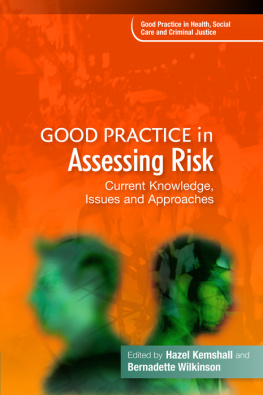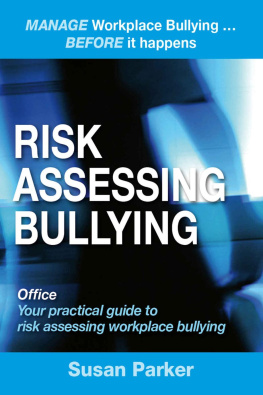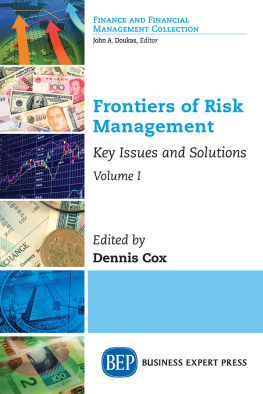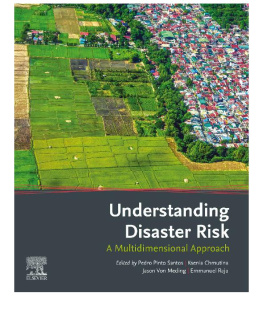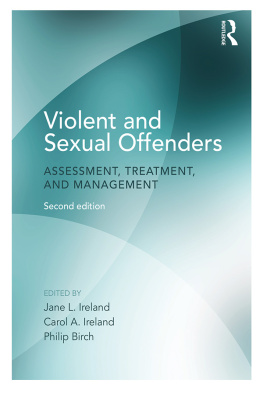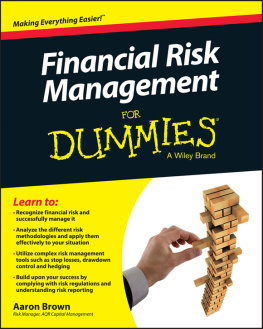Introduction
Hazel Kemshall and Bernadette Wilkinson
Risk is ubiquitous and we have become a risk preoccupied society. In this climate, professionals working with risk in health, social care, social work and criminal justice are required to adopt high standards of practice and high-quality policies and procedures, and to balance competing concerns about risk, including difficult balances between protection, rights and risk taking (see Baker and Wilkinson, Chapter 1; Titterton, Chapter 2). This needs to include complex decision making in situations of stress and potential blame, and in contexts where perceptions of risk by clients and users can differ from practitioners views, or be seriously at odds with community expectations of safety (e.g. where communities have defensive and exclusionary attitudes to sex offenders, or punitive attitudes to abusive parents).
Risk can also compete with other agendas, such as those concerned with engaging service users (e.g. in mental health, or in work with children and families) versus political imperatives for low risk and safety (see Maden, Chapter 6; Calder, Chapter 11). This book explores some of these competing perceptions and the role of power and control in risk assessment and management, including the role of centralised power and bureaucracy (see Peckover et al., Chapter 5). Calder for example (Chapter 11), outlines the roles of bureaucracy and organisational function in hindering high-quality professional practice with risk. Other chapters deconstruct the languages and definitions of risk used in particular settings (e.g. child protection, see Peckover et al., Chapter 5), or the insidious negative connotations carried by the word risk in most social care and social work policy (see Titterton, Chapter 2).
Contributors to this book draw out many of the difficulties and limitations of a focus on risk but they also develop from those critiques ideas for improving practice. The controlling function of official discourses of risk is countered by the increased voice achieved by service users in recent years (see Littlechild and Glasby et al., Chapter 9, for example); and an increased focus on resilience rather than risk (see Boeck and Fleming, Chapter 3). This voice is rooted in a greater research and policy recognition of the situated accounts of risk and risk taking of users for example, through the use of client narratives and story telling with a focus in this book on young people deemed to be at risk or as posing a risk (Boeck and Fleming, Chapter 3; Baker and Kelly, Chapter 4). These chapters reflect emerging research techniques for gaining more in-depth and sophisticated views of risk. Maden (Chapter 6) explores how a more positive approach to the possibilities of risk assessment can reduce the negative framing of mental health and violence risk, and enable positive approaches to risk management that increase community safety and patient well-being. Barnett and Mann (Chapter 8) consider how even in the very emotive field of practice with sex offenders, collaborative and positive approaches to risk assessment are being developed. Robinson (Chapter 7) pursues this theme of collaboration by considering the use of risk tools with victims to better ensure effective safety plans.
The role of alternative approaches to risk assessment and management is explored, including positive risk taking (Titterton, Chapter 2), and increased professional approaches to the challenges of risk decision making, particularly by taking a more positive framing of defensibility than has been apparent in much social and public policy of late (Baker and Wilkinson, Chapter 1). This is echoed by Peckover et al. (Chapter 5) who explore the potential for improving risk assessment tools by involving practitioners in their design. Broader policy developments are beginning to promote alternative interventions such as the Good Lives Model (GLM) (see Barnett and Mann, Chapter 8), and Robinson shows how a risk approach to victims in the context of domestic violence can positively change service responses and help victims to be heard. Differing practice and policy paradigms are emerging such as public health approaches to risk assessment and management (Wood, Chapter 10) and more positive future oriented understandings like the GLM (Barnett and Mann, Chapter 8), which takes us towards a more active involvement of potential perpetrators in managing their own risk and changing their lives and behaviours.
The Public Health Approach (PHA) takes us beyond a public protection paradigm vested in professionals towards broader community responses to safety, using a combination of public awareness campaigns and community-based approaches to managing risk within which the public plays a more active role. This has the potential to engage communities as active participants in risk management, rather than as passive recipients of safety (Kemshall 2008; The Derwent Initiative 2007). While these more recent approaches no doubt present practitioners and policy makers with challenges, not least to increase their transparency and engagement with communities and users about risk, it may in the long run make risk less contested and its management easier to achieve.
Risk remains a complex policy and practice issue. After some 15 years of practice, policy and research on risk, our understanding of this complex issue has increased. The contributors to this book all demonstrate how new and challenging ideas are enabling considerable practice and policy development. We hope that readers will find the material in this volume helpful in the daily practice of running the risk.
References
Kemshall, H. (2008) Understanding the Community Management of High Risk Offenders. Maidenhead: Open University/McGraw-Hill.
The Derwent Initiative (TDI) (2007) Tackling Sex Offending Together. Newcastle upon Tyne: TDI.
Chapter 1
Professional Risk Taking and Defensible Decisions
Kerry Baker and Bernadette Wilkinson
Introduction
The increasing focus on risk in social care, health and criminal justice services has an impact on all aspects of decision-making (Kemshall et al. 1997). It affects not just the big decisions such as whether to remove a child from his or her family or whether to release an offender on parole but also the smaller everyday decisions as to which practice is employed (such as whether or not to do a home visit, or to make an extra phone call for information). Even the task of risk assessment generates its own risk and creates new dangers (Beckett 2008, p.41) because, for example, the more time that is spent assessing one case, the less time there is available for risk assessment in other cases.
Practitioners and managers are faced with the challenge of making demanding decisions about risk with the added pressures of working in a climate of limited resources and intense media and political scrutiny. Power (2004) suggests that this produces risk averse cultures in which organisations and individuals become more concerned with managing reputational risk, thereby sometimes taking attention away from the risks they originally set out to manage. The widespread adoption of the concept of defensible decision making (Kemshall 1998) has arguably been a result of both real concern to manage risks, such as those posed by offending, and a concern with organisational risk (Whitty 2009).
One consequence of this is that, instead of focusing on defensibility, practice can instead sometimes become defensive, contributing to a culture where back covering becomes the priority and appropriate risks are not taken. Titterton (2005) suggests that the fears of individual professionals combined with a risk averse organisational culture may limit the capacity for risk taking, while Taylors impression from a study of practice in relation to care of the elderly was that [t]he rationale for decision making seemed to be more about what was defensible than what was right (Taylor 2006, p.1424). In response to such concerns, some local government services in the UK have begun to rename and rewrite their risk assessment and risk management policies in order to encourage what they see as a more positive approach to risk (Aberdeen City Council 2009).

